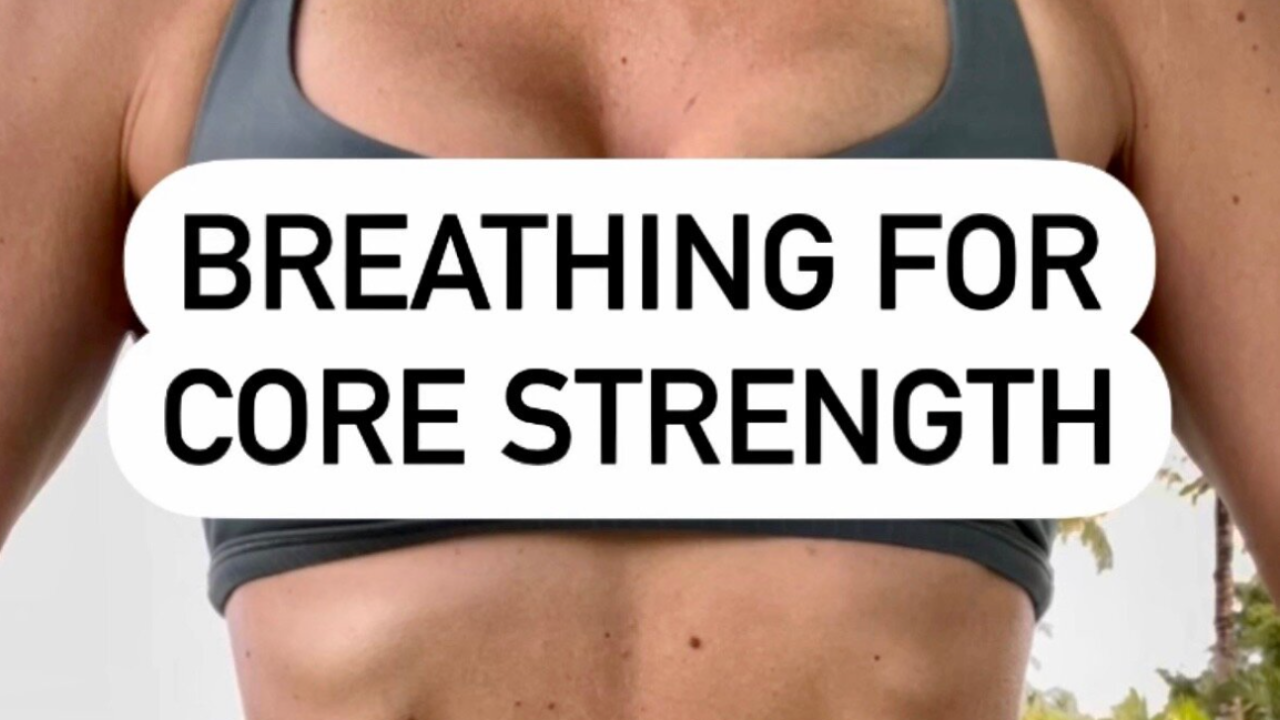4 Simple Breathing Practices For Core Strength


You're frustrated because despite all your efforts, your core still feels smushy and weak. Your belly protrudes during exercise. You've tried countless programs and PT appointments, but your waist keeps expanding instead of narrowing.
Here's why: spinal position is just one of the reflexes that determine whether your core muscles activate or shut down. The other critical factor? Your breathing.
What makes core muscles unique is that 80% of their fibers are involuntary, meaning you can't consciously control them through traditional exercise. These muscles respond automatically to spinal position and breathing patterns.
This explains why those crunches and kegels haven't fixed your core issues - they're targeting only the 20% of muscle fibers you can voluntarily control while potentially shutting down the other 80%.
The good news? You don't need to set aside more time in your already packed day. By changing how you breathe throughout your existing activities, you can:
- Elevate your organs and reduce abdominal pressure
- Decompress your spine
- Activate your core muscles with every breath
- Strengthen your core all day long without dedicated "exercise time"
I'm about to share 4 simple steps to breathing for core strength that will finally give you that flat, toned belly and strong core you've been working for, without living at the gym or adding one more thing to your to-do list.
4 Breathing Practices for Core Strength
#1: Breathe into your rib cage, not your belly.
One of the most important aspects of breathing for core health is that your abdomen does not expand very much, if at all, when you inhale. The rib cage should expand three-dimensionally, but not the belly. We have all heard of belly breathing, and it does indeed bring many benefits… when performed in a supine position (laying on your back). But when you are active and upright against gravity, breathing into your belly will lead to relaxation of the abdominal muscles, stretching of the abdominal fascia, and loss of stability in the spine. When you’re upright and active, the best way to breathe is into your rib cage. A flexible rib cage leads to a healthy core. If the movement of breathing occurs mostly in the rib cage, instead of the abdominal cavity, the abdominal muscles will be gently activated, the abdominal fascia will stay taut, and the spine will be more stabilized. So, focus on breathing into your rib cage when you inhale, and not letting your belly expand very much.
#2: Focus on lateral expansion of the lower rib cage on inhale.
Focusing on lateral (side to side) expansion of the lower rib cage on inhale will improve the direction of movement of the diaphragm and keep your core muscles active. When the diaphragm moves more laterally to bring air in, instead of only moving down to bring air in, the abdominal and pelvic muscles will be drawn up and in. Focusing on lateral expansion of the lower rib cage will also activate the lower lungs. When the lower lungs are engaged, a calming effect happens. This is because the lower lungs contain parasympathetic nerve receptors, and when they are activated, they tell the brain to send calming hormones out to battle stress. That’s why opening your lower ribs on your inhale will not only strengthen your core, it will also keep you calm.
#3: Breathe through your nose.
Breathing through your nose will improve rib expansion and make you take deeper, slower breaths. Taking deeper, slower breaths will facilitate the pumping action of your pelvic floor muscles and cause them to be more active and supportive. Taking deep slow breaths will also reduce your heart rate and blood pressure, and therefore improve your longevity. Nasal breathing also increases nitric oxide production in your nose. Nitric oxide improves your lungs’ ability to absorb oxygen and your blood’s ability to transport that oxygen throughout your body. Breathing in and out of your nose will also signal the parasympathetic nervous system to decrease the “fight or flight” response and reduce stress hormones. At rest, it is best to inhale and exhale through your nose. When you are performing an activity that requires more oxygen, like exercise, you might need to exhale out of your mouth to get rid of CO2 faster. But still, try to inhale through your nose during exercise to improve oxygen saturation.
#4: Keep your waist long and your lower ribs open on exhale.
Maintaining a good distance between your rib cage and your pelvis as you exhale will also gently activate your core muscles. If your abdominal and pelvic cavities stay more “spacious” on your exhale, there will be more room for your pelvic floor muscles to gently move with your breathing. When the ribs forcefully close and the rib cage lowers during exhale, pressure increases in your abdomen, the pelvic organs move down and the pelvic floor muscles become compressed and inactive. So keeping your ribs relaxed and open on the exhale will prevent this. A long waist during exhale also gently engages the abdominal and spinal muscles, tones the core, and encourages good posture and spinal position.


